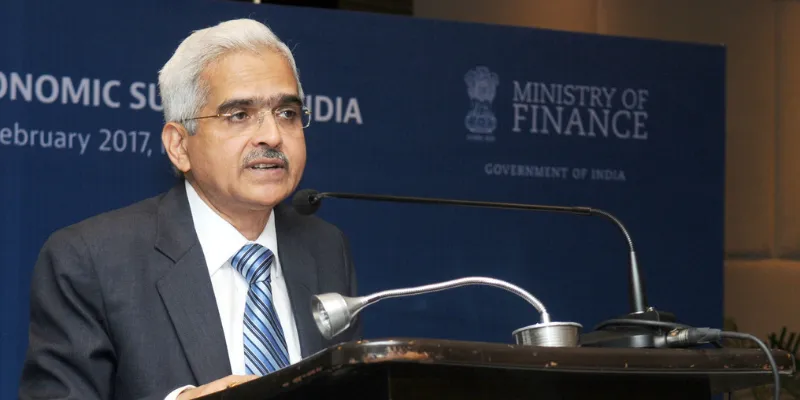Reserve Bank of India announces measures to boost economy amid COVID-19 crisis
The RBI Governor said that the bank would deploy all resources to support citizens, financial institutions and businesses
The Governor of the Reserve Bank of India (RBI) Shaktikanta Das released a statement on Wednesday, detailing various measures the bank is taking to support the economy. India is currently fighting a mutant strain of the COVID-19 virus amidst a second wave of the pandemic.
Along with a devastating impact on human life, businesses and livelihoods are also being affected. “As in the recent past, the RBI will continue to monitor the emerging situation and deploy all resources and instruments at its command in the service of the nation, especially for our citizens, business entities, and institutions beleaguered by the second wave,” said Das.

Shaktikanta Das , RBI Governor
He said that the devastating pace at which the virus affects different regions of the country had to ‘be matched by swift-footed and wide-ranging actions that are calibrated, sequenced and well-timed so as to reach out to various sections of society and business, right down to the smallest and the most vulnerable’.
Das said that the RBI is proposing to undertake the first part of a calibrated and comprehensive strategy against the pandemic. He said that the global economy is exhibiting incipient signs of recovery as countries renew their tryst with growth, supported by monetary and fiscal stimulus. Still, activity remains uneven across countries and sectors, with the outlook highly uncertain.
Specifying measures to fight against the second wave, he said alleviating any constraints in terms of financing for all stakeholders – government, hospitals and dispensaries, pharmacies, vaccine/medicine manufacturers/importers, medical oxygen manufacturers/suppliers, private operators engaged in the critical healthcare supply chain, and above all the common man who may be facing a sudden spike in health expenditure – requires a comprehensive targeted policy response.
“Small businesses and financial entities at the grassroots level are bearing the biggest brunt of the second wave of infections. Against this backdrop and based on our continuing assessment of the macroeconomic situation and financial market conditions, we propose to take further measures, as enumerated below,” he added.
Banks would also be incentivised for quick delivery of credit under the scheme through an extension of priority sector classification to such lending up to March 31, 2022. These loans will continue to be classified under priority sector till repayment or maturity, whichever is earlier. Banks may deliver these loans to borrowers directly or through intermediary financial entities regulated by the RBI. Banks are expected to create a COVID loan book under the scheme. By way of an additional incentive, such banks will be eligible to park their surplus liquidity up to the size of the COVID loan book with the RBI under the reverse repo window at a rate which is 25 bps lower than the repo rate or, termed in a different way, 40 bps higher than the reverse repo rate.
To provide further support to small business units, micro and small industries, and other unorganised sector entities adversely affected during the current wave of the pandemic, it has been decided to conduct special three-year long-term repo operations (SLTRO) of ₹10,000 crore at repo rate for the SFBs, to be deployed for fresh lending of up to ₹10 lakh per borrower. This facility will be available till October 31, 2021.
To boost the provision of immediate liquidity for ramping up COVID-related healthcare infrastructure and services in the country, an on-tap liquidity window of Rs 50,000 crore with tenors of up to three years at the repo rate is being opened till March 31, 2022. Under the scheme, banks can provide fresh lending support to a wide range of entities including vaccine manufacturers; importers/suppliers of vaccines and priority medical devices; hospitals/dispensaries; pathology labs; manufacturers and suppliers of oxygen and ventilators; importers of vaccines and COVID related drugs; logistics firms and also patients for treatment.
In order to mitigate the pandemic related stress on banks and as a measure to enable capital conservation, banks are being allowed to utilise 100 percent of floating provisions/counter-cyclical provisioning buffer held by them as on December 31, 2020, for making specific provisions for non-performing assets with prior approval of their Boards. Such utilisation is permitted with immediate effect and up to March 31, 2022.
“We must remain resolutely focused on a post-pandemic future of strong and sustainable growth with macroeconomic and financial stability. I call upon all stakeholders to come forward once again to address the challenges posed by the current wave of the pandemic, while remaining on guard against future waves. In closing, I again quote the words of Mahatma Gandhi, “Our faith should be like an ever-burning lamp which not only gives us light but also illuminates the surroundings,” said Das
Edited by Diya Koshy George







